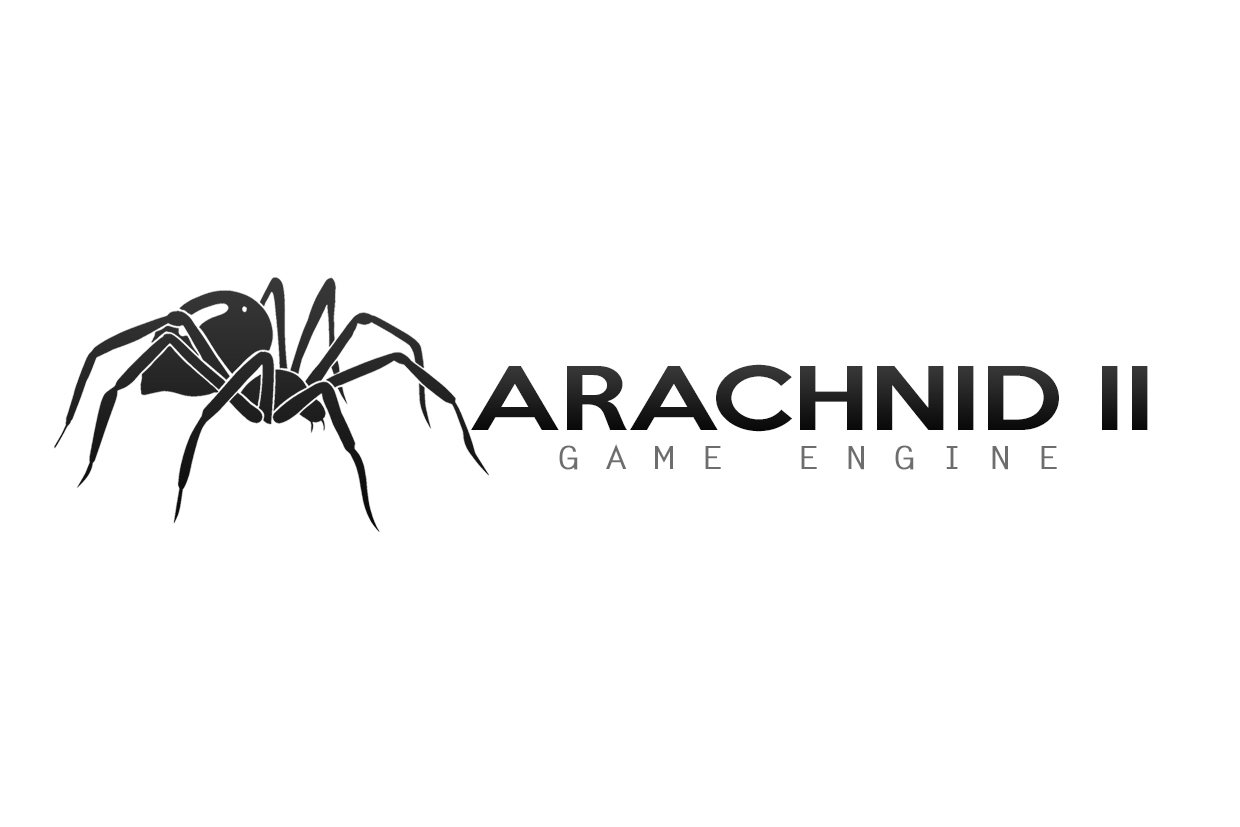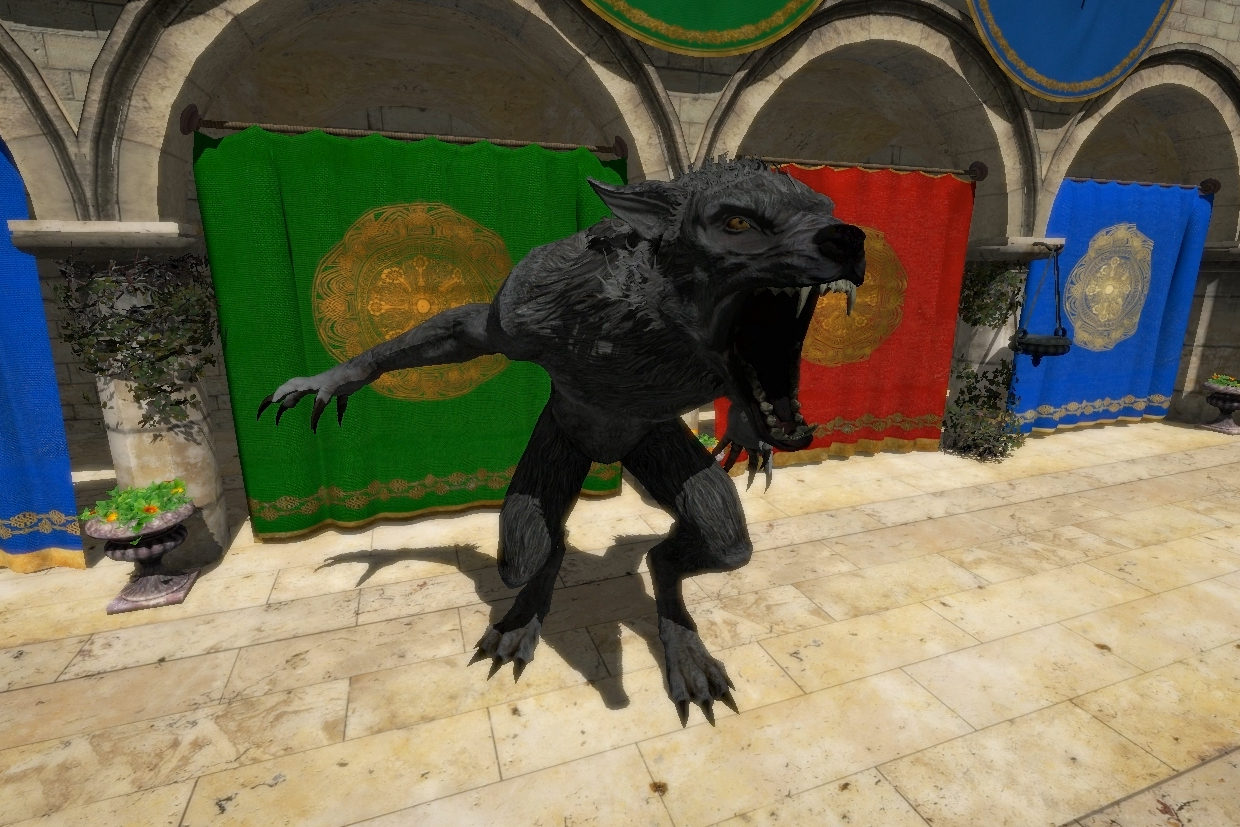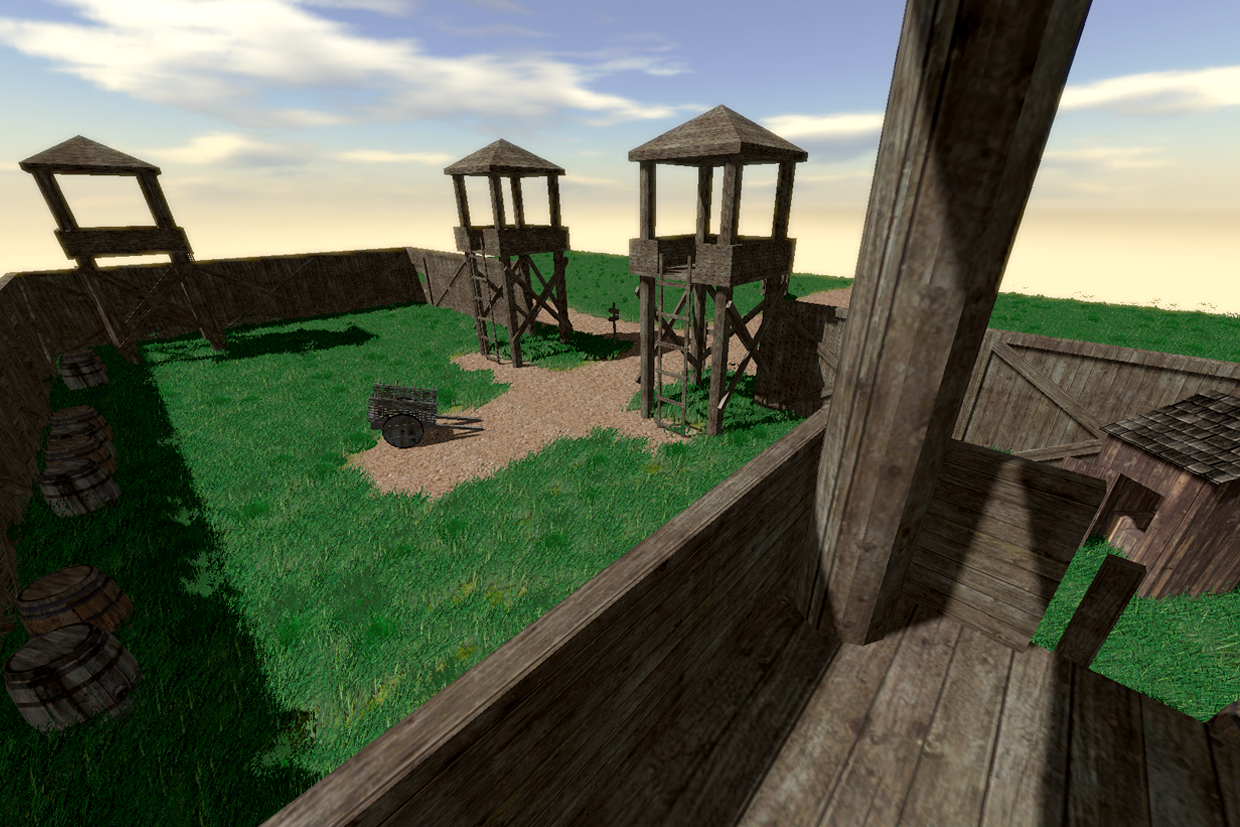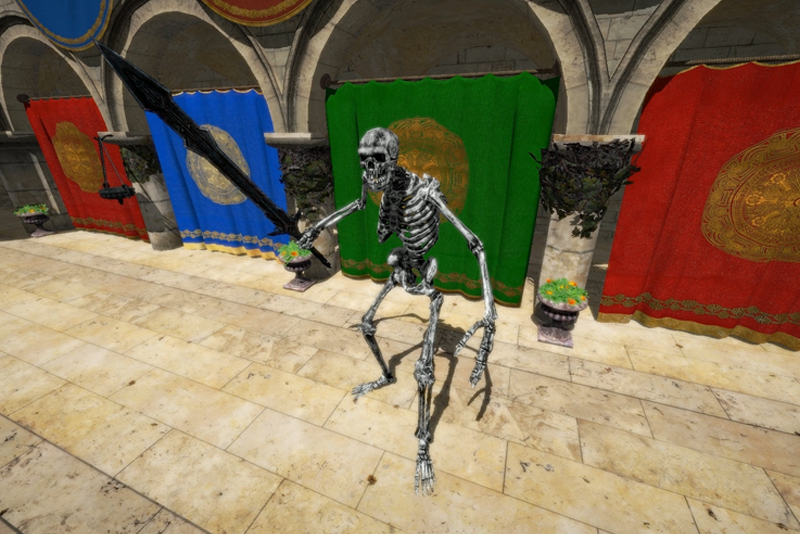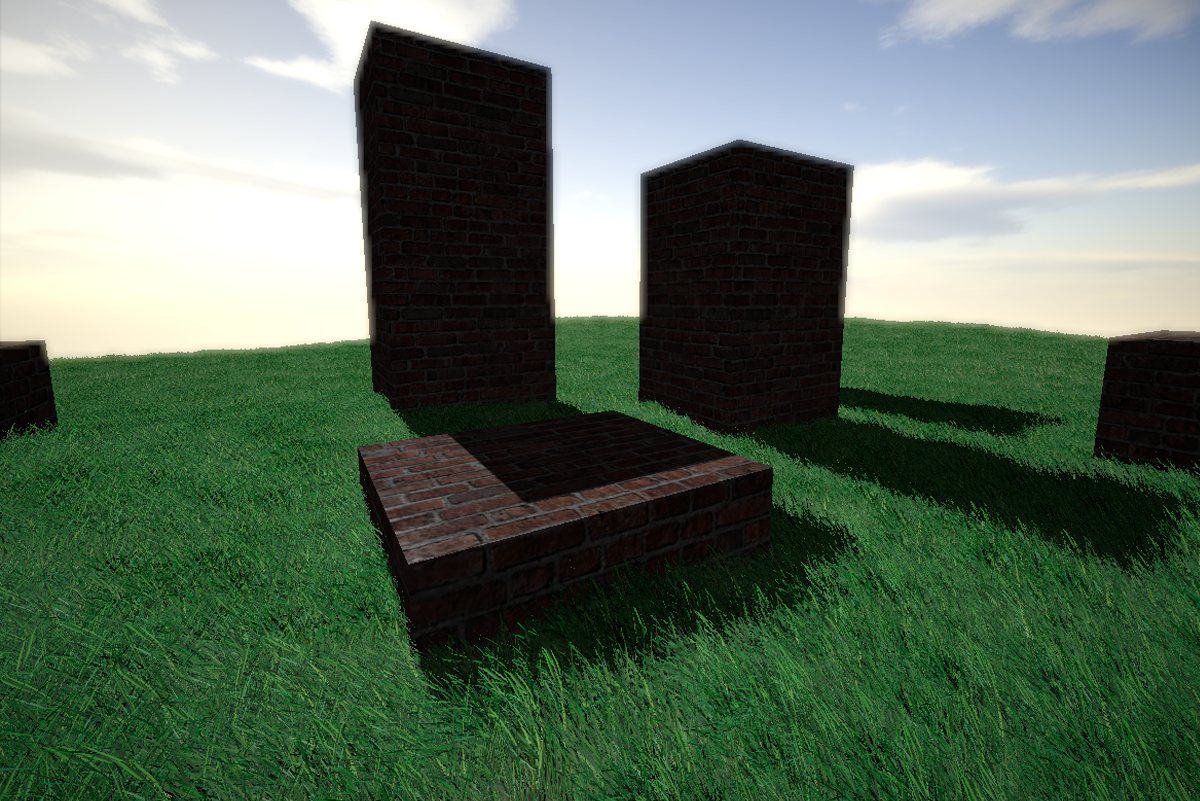Arachnid II Game Engine
The Arachnid II Game Engine is a free, open source, 3D game engine that I developed between 2012 and 2015. The engine is built with C++ and DirectX 11, and contains over 70,000 lines of code! Some features of this engine include deferred rendering, 3D audio rendering, shadow mapping, character animation, terrain rendering, HDR post-processing, binary space partitioning, level editing, and first-person player navigation.
The first public release of the Arachnid II Game Engine will be made available on this website in the near future! However, over the next few months a series of videos demonstrating the technical features and capabilities of the Arachnid II Game Engine will be posted. There's a lot to show, so stay tuned!
